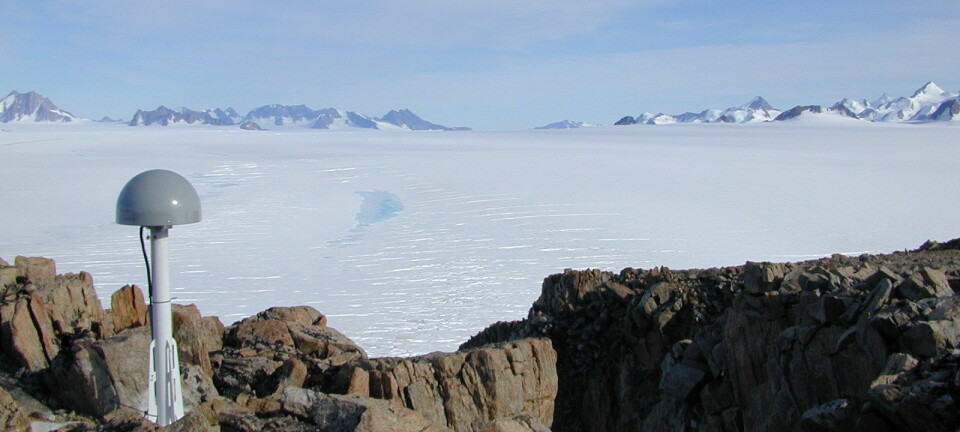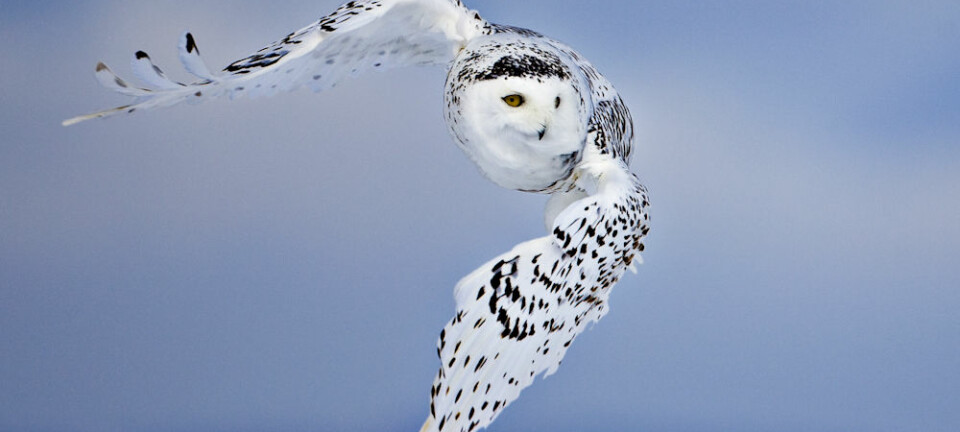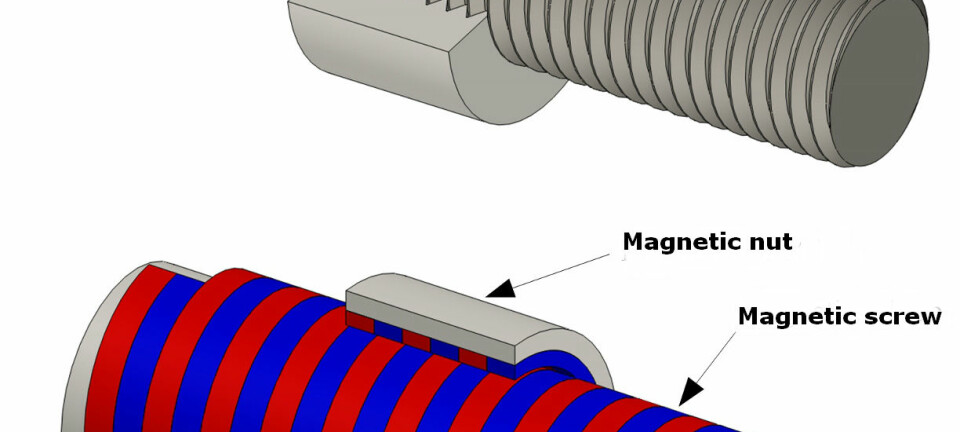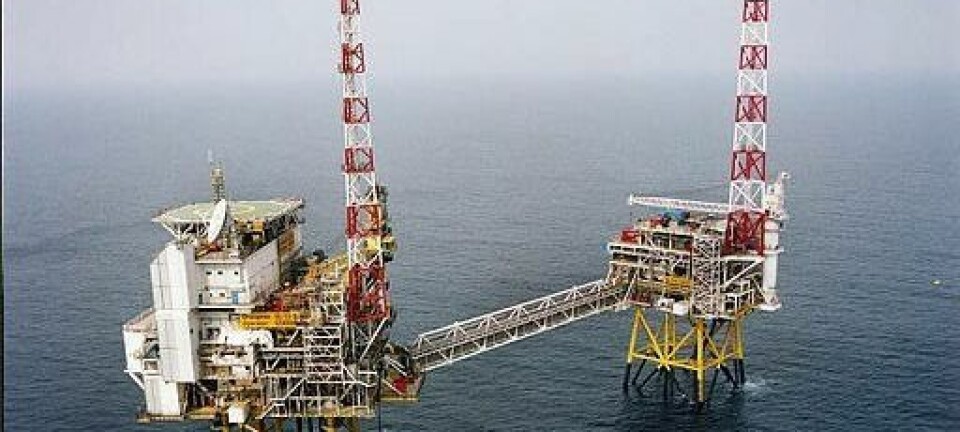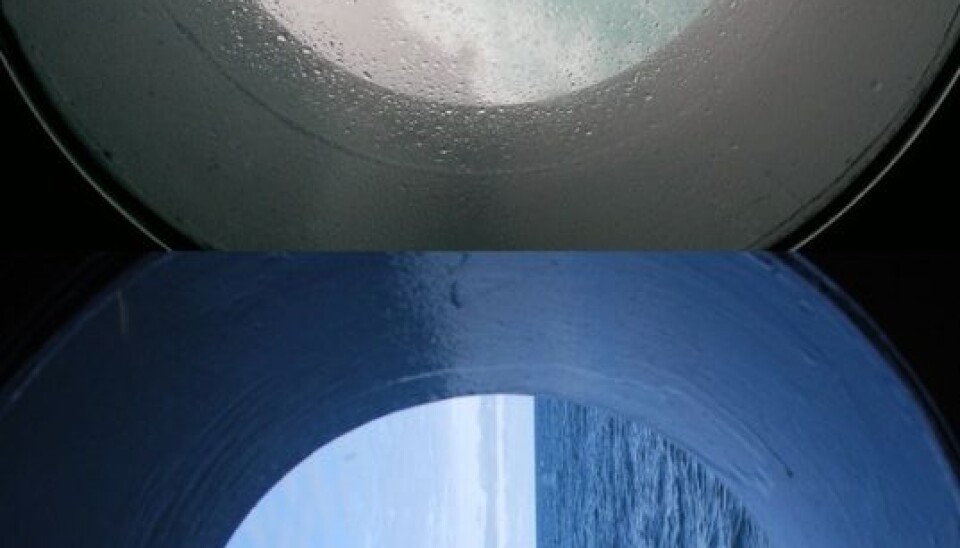
Sounding out marine life
Scientists aboard the research ship G.O. Sars transmit pulses of sound into the sea to image the biomass below.
Denne artikkelen er over ti år gammel og kan inneholde utdatert informasjon.
Waves rule the seas.
But some of the scientists on the research vessel G.O. Sars, sailing from Greenland to Norway, are interested in other kinds of waves: sound waves and bioacoustic waves.
One of the cabins on the fifth deck is crammed with monitors, displaying colourful strips of light.
They look like a world record attempt to record pre-schoolers’ scribblings.
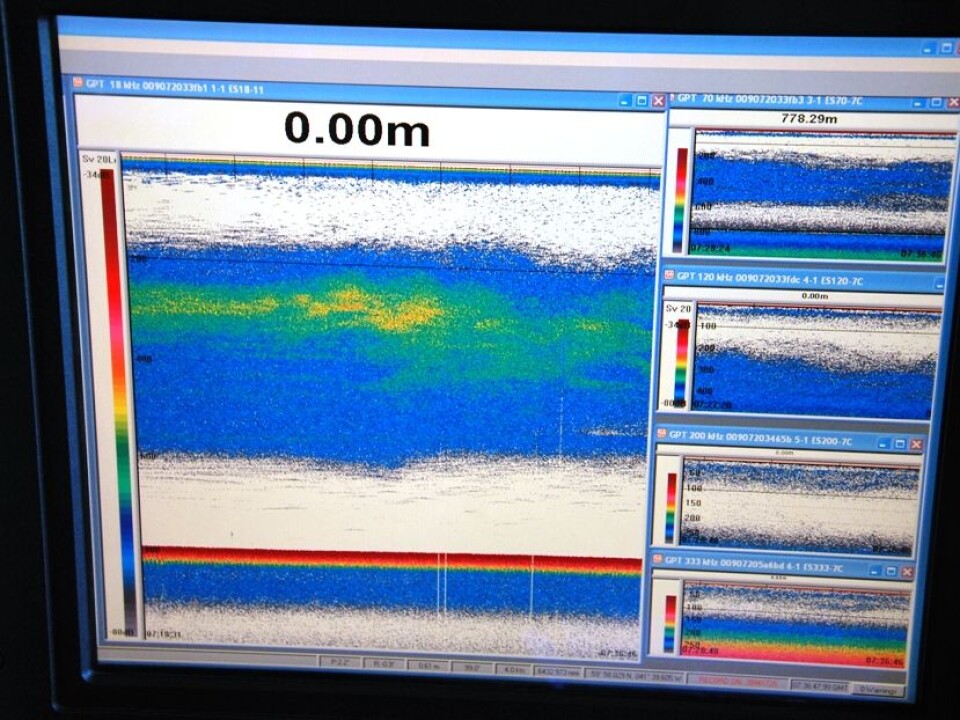
The echo sounder’s display screen is a flickering mix of blue, green, yellow and red fields that travel across the screen. The patterns are instantaneous interpretations of the signals that bounce off whatever the ship is passing over.
Fish or a submarine?
Echo sounders or sonar sends sound waves into the water. These waves travel until they are stopped by something or peter out from the resistance of the seawater. Only a tiny fraction of the sound wave will bounce off an obstruction and return to be measured on board the ship.
If you send a 200-decibel signal toward a single krill, only -70 decibels comes back at you, or just a millionth of the original signal.
Back during WWII, the US Navy discovered that the sonar waves they were sending out bounced back with lots of “noise. ” This phenomenon was not from enemy subs, but represented echoes of whatever sea life was found in the vicinity.
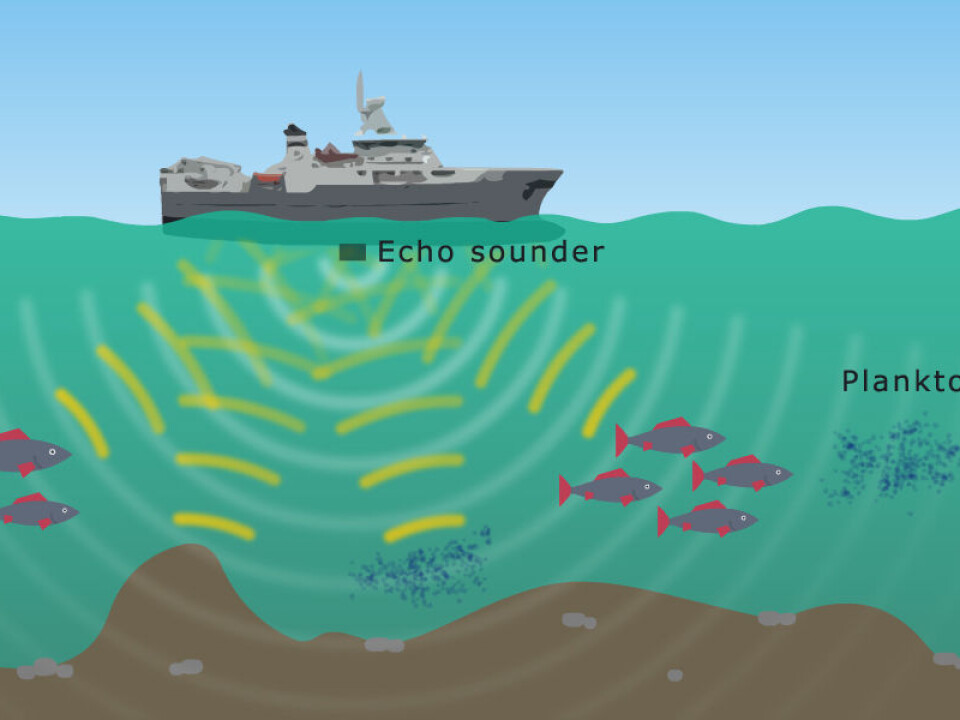
Navy scientists had to separate the noise from fish and other creatures from the returning signal. The Navy hired marine biologists to analyse the sound images. As professionals, the biologists were often at least as interested in the noise itself as the whereabouts of “Das Boot”, and the field of bioacoustics was born.
Wave interpretations with thousands of variables
Peter Wiebe, one of participants on board, is a retired marine biologist from the Woods Hole Oceanographic Institute in Massachusetts. He has worked with bioacoustics since the 1980s. The field was then just being launched:
“When I started out I was told that everything living in the ocean emits the same echo, as if it were a spherical ball of material. There was allegedly a direct correlation between the strength of the signal and the biomass down below. This is untrue,” says Wiebe.
First of all, sound waves can be transmitted at different frequencies, i.e., various wavelengths. The scientists aboard the G. O. Sars use six frequencies, each of which has its own pros and cons.

High frequencies (short wavelengths) provide an image with higher definition, so you get more detail. But these have a shorter range. The highest frequency only penetrates 100 metres before it is dispersed and fades out in the water.
The lowest frequencies (long wavelengths) have a range of 900 metres, but the image created is grainy and hard to interpret.
“The signal from any given species isn’t constant. Krill create one type of signal at one depth but look different at another depth. A young mackerel that is well fed will emit a different signal than one that is undernourished. And a mackerel swimming vertically looks different than one swimming horizontally,” explains Wiebe.
Jammed with jellyfish
Another example is the contrast between the tiny crustaceans called copepods and salt water snails. These snails reflect sound much better than copepods do, so a snail can create the same effect as 1,000 copepods its identical size. So when you get a signal that could be one snail or 1,000 crustaceans, which is it?
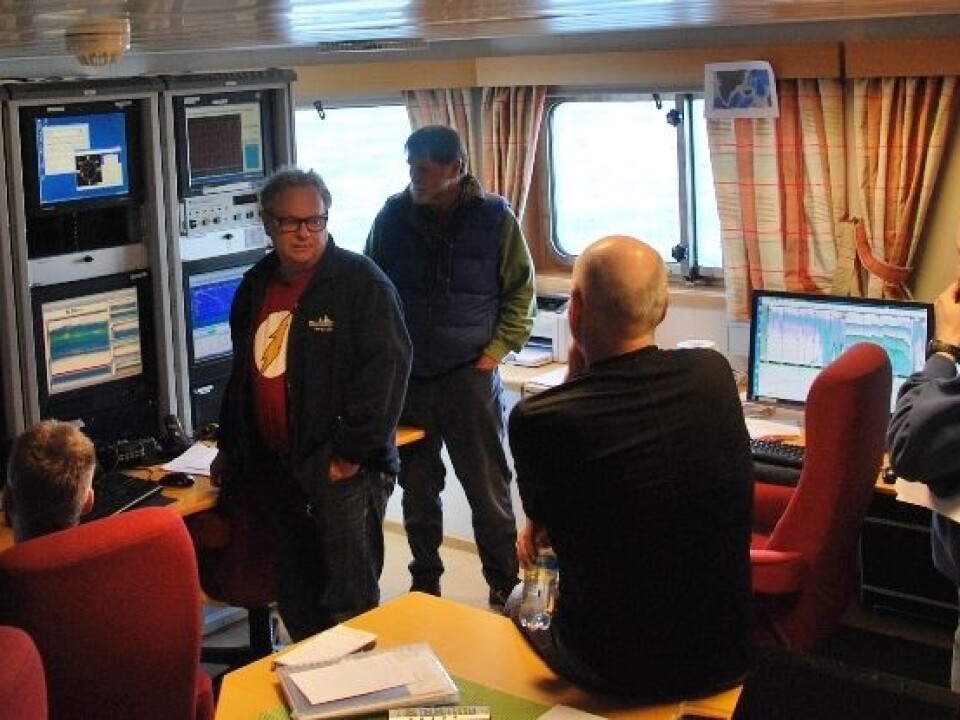
The answer isn't obvious from the audio signal that returns to the ship. But it’s really important if you are trying to chart the ecosystems we’re cruising over, which is the goal of this voyage.
How much sound do jellyfish reflect and what percentage do they represent of the spots displayed on the screens of the fifth deck? The researchers don’t know yet. Much of the mass brought up in the nets has been jellyfish, and the scientists want to find the links between what electronics pick up and what nets pick up.
If they don’t learn to discern between the signals, much that the computer interprets as fish and plankton could actually be jellyfish.
“If you treat bioacoustics as a simple problem you’ll be getting the wrong answers most of the time,” says Wiebe.
The waves of ascent and descent
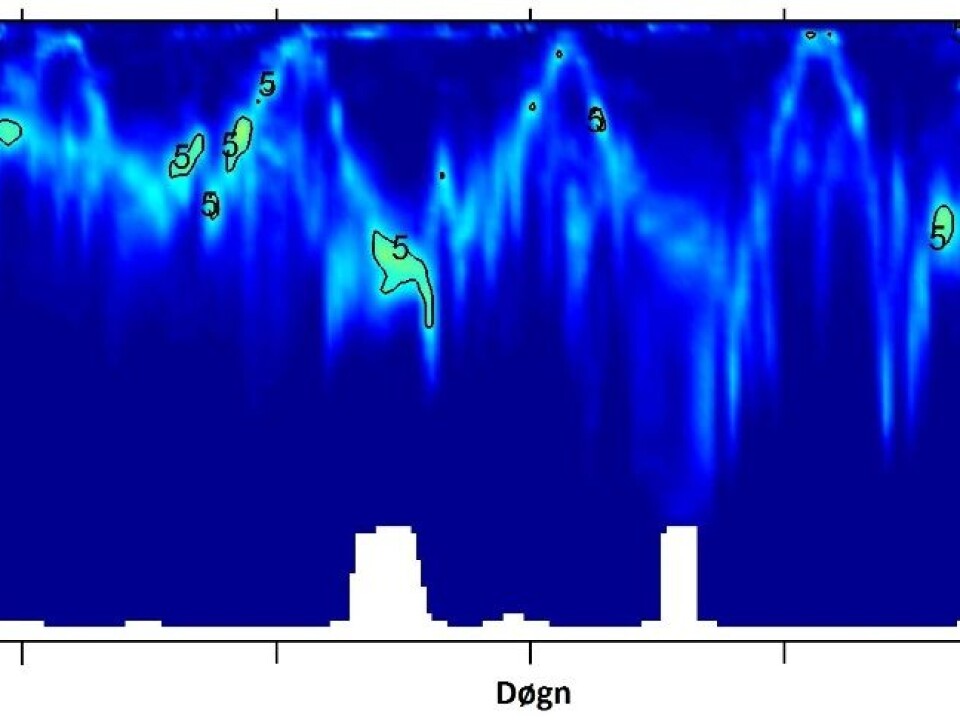
Krill are also small crustaceans, like tiny shrimp, and they are an essential basic element of the marine food chain. Fish and certain whales live on krill, which in turn eat both zooplankton and phytoplankton. Krill is now also being caught in fine-meshed plankton nets, much by Japanese and Norwegian factory ships, and turned into seafood or feeds for the fish farming.
A computer on board G. O. Sars has has software that models what a typical swarm of krill looks like on sonar. They can thus be differentiated from other life forms down below.
Wiebe spends some of his time aboard creating depictions of the ocean below us as we cruise along. The separate images from bioacoustic measurements can be strung together to create an overview of the proliferation of different species, either geographically or at a given site at different times.
This last - measuring data in one place over time - provides evidence of a third kind of wave: The vertical migration of sea creatures over the course of a day.
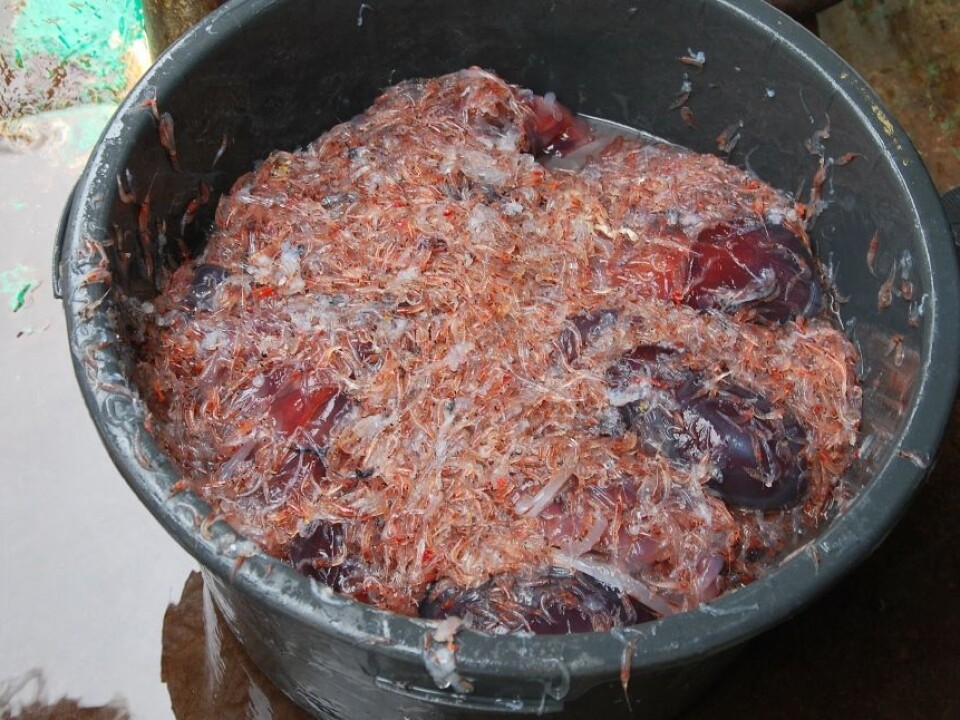
The best pickings are up by the surface, whether you're predator or prey. But it’s safer down in the murky depths if you're more likely to be eaten. So krill and other small creatures tend to stay down below during the daytime. When night falls, they rise up to feed.
Using the echo sounder’s visualizations of krill to show their movements over the course of a day in the Labrador Sea, you could see how the zooplankton sink during the day but rise at night:
The scientists are aware of these undulations, but lack the details behind the big picture. Some of the things they want to learn are how far the animals descend, which species go deepest, and whether there is any difference in these patterns from one ocean to another.
---------------------------
Read the Norwegian version of this article at forskning.no
Translated by: Glenn Ostling







